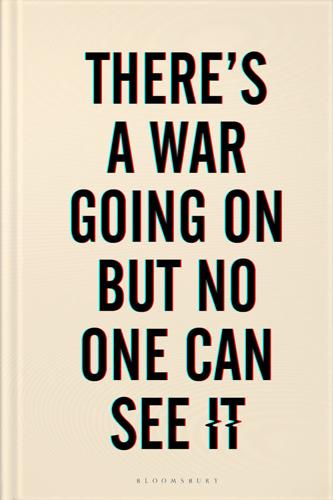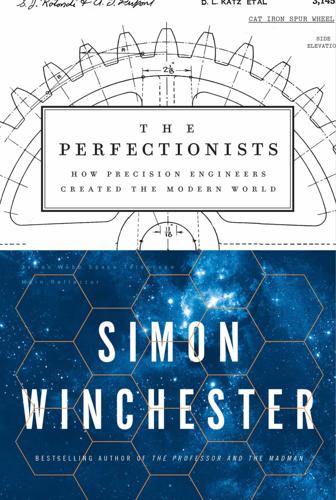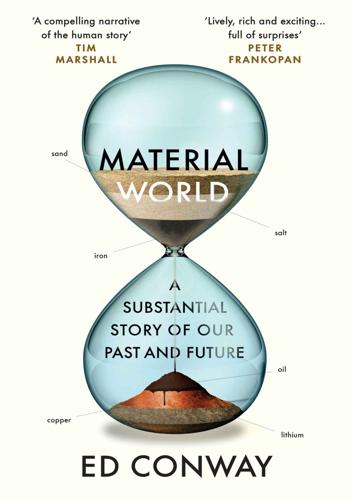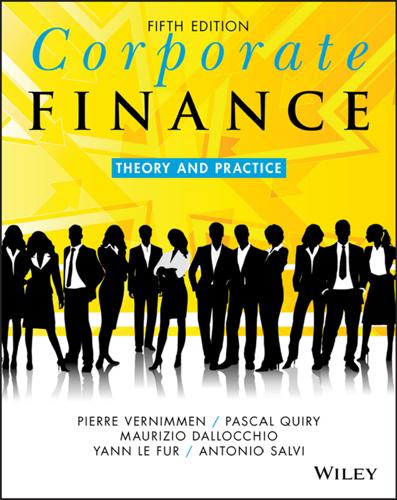
The Everything Blueprint: The Microchip Design That Changed the World
by
James Ashton
Published 11 May 2023
The technology that came to market in the NXE:3400B had taken more than 20 years to develop at a cost of more than €10bn. A description of how it worked read like a passage from a science fiction novel. It began with ASML’s extreme ultraviolet (EUV) technology that used light with a wavelength of just 13.5nm to shrink the size and increase the density of a microchip’s features. That wavelength was 14 times shorter than ASML’s previous best, known as deep ultraviolet (DUV), which used light of 193nm. To create its own EUV stream, ASML devised a system that heated droplets of molten tin with a carbon dioxide laser to a temperature 100 times higher than the surface of the sun.
…
With recollections of the memory-chip wars still fresh, Nikon of Japan was deemed an unacceptable joiner. The US did not have the same troubled trading history with the Netherlands, so an ASML partnership was approved in 1999 – although it took more than a year to negotiate. Niggles surfaced in 2000, however, when ASML spent $1.6bn to acquire Silicon Valley Group (SVG). The deal mopped up what remained of the lagging US lithography industry and was an elegant solution that bought ASML’s way onto Intel’s supplier list. (Although its progress meant that in all likelihood it would have eventually got there anyway.) The other Japanese competitor in this field, Canon, had been blocked from forging an alliance with SVG years before.
…
Dunn thought the acquisition would take three months to complete. By the time ASML agreed to sell SVG’s Tinsley Labs division, which had supplied mirrors to the Hubble space telescope, and committed to invest heavily in the remaining US operation he had made several trips to the Pentagon and a year had passed. Nevertheless, ASML’s position was strengthened considerably and soon after, in 2002, its time-saving Twinscan innovation, a machine which could handle two silicon wafers at once, saw it crowned as the world’s top lithography tool supplier. In 2006, it demonstrated it was nosing further ahead. ASML delivered two EUV prototype models, to the Interuniversity Microelectronics Centre (IMEC) in Leuven, Belgium, and the College of Nanoscale Science and Engineering (CNSE) of the State University of New York.

There's a War Going on but No One Can See It
by
Huib Modderkolk
Published 1 Sep 2021
A co-worker and I are on weekend duty. Our job is to keep an eye on the domestic news. A scoop on the Dutch tech website Tweakers catches my attention. Apparently, Chinese hackers have breached ASML. Based in Veldhoven, to the south, ASML is the market-leading manufacturer of machines that make chips for devices like mobiles and computers. Customers include Intel and Samsung. It’s a competitive industry and ASML is locked in a perpetual arms race with other manufacturers to be the best. In this case, that means making ever smaller chips with ever more computing power. By spending billions on research and thanks to some very expensive and unique technology, the Dutch company has so far managed to stay one step ahead.
…
By spending billions on research and thanks to some very expensive and unique technology, the Dutch company has so far managed to stay one step ahead. That Chinese government hackers have breached this multi-billion-dollar company could have tremendous ramifications. ASML supplies many of its chip-making machines to customers in Asia. If China steals ASML’s technology, soon it could be making and marketing chip machines itself. It raises all kinds of questions: how did China break inside ASML? How long have they been in the company? How serious is the damage? And how was the spying discovered? I call four sources over an encrypted connection in the hope of learning more. But they’re cagey and uninformative, and my one good source is clearly annoyed.
…
Public authorities on all sides warn of the dangers, rumours circulate about companies that have been affected and it’s a hot topic at conferences. But it’s difficult to come by concrete evidence, because everyone’s lips are sealed. Even when a company is hacked, as in the case of ASML now, I come up against a brick wall. ASML downplays the spying. ‘We never respond to queries about specific security cases,’ the chipmaker initially tells me, only to offer partial confirmation a few days later: ‘As it appears now, only a small amount of data was accessed.’ When a company discovers it’s being spied on, it calls in security experts.

The Perfectionists: How Precision Engineers Created the Modern World
by
Simon Winchester
Published 7 May 2018
Naval Research Laboratory) Transit-system satellite (courtesy of the National Air and Space Museum, Smithsonian Institution) Bradford Parkinson Schriever Air Force Base, Colorado (courtesy of Schriever Air Force Base, U.S. Air Force) Ops room of Second Space Operations Squadron ASML EUV photolithography machine (courtesy of ASML) Gordon Moore (courtesy of Intel Free Press) John Bardeen, William Shockley, and Walter Brattain First Bell Labs transistor (courtesy of Windell H. Oskay, www.evilmadscientist.com) Chart showing progress from Intel 4004 to Skylake (courtesy of Max Roser/Creative Commons BY-SA-2.0) Main mirror for James Webb Space Telescope Aerial view of LIGO Hanford Observatory LIGO test mass (courtesy of Caltech/MIT/LIGO Lab) Seiko Building with clock in Ginza (courtesy of Oleksiy Maksymenko Photography) Quartz watch (courtesy of Museumsfoto/Creative Commons BY-SA-3.0 de) Makers of Grand Seiko mechanical watch Bamboo creation from Met exhibit (courtesy of Metropolitan Museum of Art) Example of fine urushi work (courtesy of the Japan Folk-Craft Museum) Prologue The aim of science is not to open the door to infinite wisdom, but to set a limit to infinite error.
…
Its central business is the making, in the many fabs it has scattered around the planet—the one in Chandler is known as Fab 42—of electronic microprocessor chips, the operating brains of almost all the world’s computers. The enormous ASML devices allow the firm to manufacture these chips, and to place transistors on them in huge numbers and to any almost unreal level of precision and minute scale that today’s computer industry, pressing for ever-speedier and more powerful computers, endlessly demands. It takes an enormous machine to allow for the making of something so infinitesimally tiny as a computer chip. This Twinscan NXE:3350B photolithography machine, made by the Dutch company ASML, would fill three jet cargo aircraft. Intel, the world’s biggest chip maker, buys these $100 million machines by the score.
…
This is why everything that goes on within the ASML boxes does so in warehouse-size rooms that are thousands of times cleaner than the world beyond. There are well-known and internationally agreed standards of cleanliness for various manufacturing processes, and while one might suppose that the clean room at the Goddard Space Center in Maryland, where NASA engineers assembled the James Webb Space Telescope, was clean, it was in fact clean only up to a standard known as ISO number 7, which allows there to be 352,000 half-micron-size particles in every cubic meter of air. Rooms within the ASML facility in Holland are very much cleaner than that.

Chokepoints: American Power in the Age of Economic Warfare
by
Edward Fishman
Published 25 Feb 2025
GO TO NOTE REFERENCE IN TEXT extensive training by ASML personnel: Jessica Timings, “Busting ASML Myths,” ASML, February 23, 2022, www.asml.com/en/news/stories/2022/busting-asml-myths; Chris Miller, Chip War: The Fight for the World’s Most Critical Technology (New York: Scribner, 2022), 229. GO TO NOTE REFERENCE IN TEXT size of a bus: Timings, “Busting ASML Myths”; Will Knight, “The $150 Million Machine Keeping Moore’s Law Alive,” Wired, August 30, 2021, www.wired.com/story/asml-extreme-ultraviolet-lithography-chips-moores-law. GO TO NOTE REFERENCE IN TEXT continue withholding the license that ASML needed: Stu Woo and Yang Jie, “China Wants a Chip Machine from the Dutch.
…
GO TO NOTE REFERENCE IN TEXT most expensive mass-produced machine tool: Miller, Chip War, 230. GO TO NOTE REFERENCE IN TEXT ASML had agreed to sell the machine to SMIC: Cheng Ting-Fang and Lauly Li, “Exclusive: ASML Chip Tool Delivery to China Delayed amid US Ire,” Nikkei Asia, November 6, 2019, asia.nikkei.com/Economy/Trade-war/Exclusive-ASML-chip-tool-delivery-to-China-delayed-amid-US-ire; Toby Sterling, “ASML Sees No Financial Impact from Delay to Chinese Order for EUV Machine,” Reuters, January 22, 2020, www.reuters.com/article/asml-china/asml-sees-no-financial-impact-from-delay-to-chinese-order-for-euv-machine-idUKA5N29400B. GO TO NOTE REFERENCE IN TEXT added SMIC to the Entity List: James Politi, Demetri Sevastopulo, and Hudson Lockett, “US Adds China’s Largest Chipmaker to Export Blacklist,” Financial Times, December 18, 2020, www.ft.com/content/7dcc105e-986b-4768-9239-9f8fa9073b53.
…
Among Washington’s biggest concerns was that SMIC could gain access to an ultra-complex chipmaking machine made by the Dutch company ASML. Known as extreme ultraviolet lithography (EUV), it was the most expensive mass-produced machine tool in history. No other company made anything like it, and it was essential to produce the most advanced chips. ASML had agreed to sell the machine to SMIC for roughly $150 million. Under pressure from the Trump administration, the Dutch government dragged its feet on approving the necessary export license. But Washington could not expect diplomatic pressure to work indefinitely. ASML was by far the most valuable company in the Netherlands, and its executives held a lot of sway with the Dutch government.

Material World: A Substantial Story of Our Past and Future
by
Ed Conway
Published 15 Jun 2023
Even the chips that bear Apple’s name – the A16 Bionic was the latest iPhone chip at the time of writing – are in fact manufactured by another company altogether, Taiwan Semiconductor Manufacturing Company or, as it’s better known, TSMC. That company in turn was only able to make the chip with the help of machines made by another, even more obscure company, ASML. And at the heart of ASML’s machines are critical components made by other companies, some of which will be familiar (the lenses are made by Zeiss, with glass from Schott) and some less so (the lasers are made by another German company, Trumpf). All of that covers only a fraction of the journey – the final steps our silicon atom takes before it is admitted into your smartphone.
…
This is where sand makes yet another cameo appearance, for in order to bounce this EUV light down on to the wafer, ASML has contracted Zeiss to produce a set of special mirrors called Bragg reflectors, made from layers of silicon and molybdenum. Quite how these mirrors are made is yet another closely guarded trade secret, but according to Zeiss, they are ground down from blocks weighing 50 kilograms, and robots are used to polish and correct the outer layer with ion beams. Suffice it to say, they are, according to one ASML engineer, ‘probably the smoothest man-made structures in the universe’. If you blew one of them up to the size of the United States, the biggest bump would be less than half a millimetre high.
…
The Material World will not provide you with a gorgeous home, but it will ensure your home can actually stand up. It will keep you warm, clean, fed and well, however little heed you may pay it. The Material World is where you will find the most important companies you’ve never heard of, companies like CATL, Wacker, Codelco, Shagang, TSMC and ASML. These names may mean nothing to you, but they are just as important, perhaps more important, than the familiar brands everyone has heard of – the Walmarts, Apples, Teslas and Googles of this world. For the best-kept secret of the modern economy is that these world-famous brands depend entirely on the obscure firms of the Material World to make their products and help their clever ideas, well, materialise.

The Coming Wave: Technology, Power, and the Twenty-First Century's Greatest Dilemma
by
Mustafa Suleyman
Published 4 Sep 2023
In AI, the lion’s share of the most advanced GPUs essential to the latest models are designed by one company, the American firm NVIDIA. Most of its chips are manufactured by one company, TSMC, in Taiwan, the most advanced in just a single building, the world’s most sophisticated and expensive factory. TSMC’s machinery to make these chips comes from a single supplier, the Dutch firm ASML, by far Europe’s most valuable and important tech company. ASML’s machines, which use a technique known as extreme ultraviolet lithography and produce chips at levels of astonishing atomic precision, are among the most complex manufactured goods in history. These three companies have a choke hold on cutting-edge chips, a technology so physically constrained that one estimate argues they cost up to $10 billion per kilogram.
…
GO TO NOTE REFERENCE IN TEXT NVIDIA, the American manufacturer Stephen Nellis and Jane Lee, “Nvidia Tweaks Flagship H100 Chip for Export to China as H800,” Reuters, March 22, 2023, www.reuters.com/technology/nvidia-tweaks-flagship-h100-chip-export-china-h800-2023-03-21. GO TO NOTE REFERENCE IN TEXT ASML’s machines Moreover, not just the machines but many component parts have only one manufacturer, like high-end lasers from Cymer or mirrors from Zeiss so pure that, were they the size of Germany, an irregularity would be only a few millimeters wide. GO TO NOTE REFERENCE IN TEXT These three companies have See, for example, Michael Filler on Twitter, May 25, 2022, twitter.com/michaelfiller/status/1529633698961833984.
…
Brian, 56 artificial capable intelligence (ACI), vii, 77–78, 115, 164, 210 artificial general intelligence (AGI) catastrophe scenarios and, 209, 210 chatbots and, 114 DeepMind founding and, 8 defined, vii, 51 gorilla problem and, 115–16 gradual nature of, 75 superintelligence and, 75, 77, 78, 115 yet to come, 73–74 artificial intelligence (AI) aspirations for, 7–8 autonomy and, 114, 115 as basis of coming wave, 55 benefits of, 10–11 catastrophe scenarios and, 208, 209–11 chatbots, 64, 68, 70, 113–14 Chinese development of, 120–21 choke points in, 251 climate change and, 139 consciousness and, 74, 75 contradictions and, 202 costs of, 64, 68 current applications, 61–62 current capabilities of, 8–9 cyberattacks and, 162–63, 166–67 defined, vii early experiments in, 51–54 efficiency of, 68–69 ego and, 140 ethics and, 254 explanation and, 243 future of, 78 future ubiquity of, 284–85 global reach of, 9–10 hallucination problem and, 243 human brain as fixed target, 67–68 hyper-evolution and, 109 invisibility of, 73 limitations of, 73 medical applications, 110 military applications, 104, 165 Modern Turing Test, 76–77, 78, 115, 190, 210 narrow nature of, 73–74 near-term capabilities, 77 omni-use technology and, 111, 130 openness imperative and, 128–29 potential of, 56, 70, 135 as priority, 60 profit motive and, 134, 135, 136 proliferation of, 68–69 protein structure and, 88–89 red teaming and, 246 regulation attempts, 229, 260–61 research unpredictability and, 130 robotics and, 95, 96, 98 safety and, 241, 243–44 scaling hypothesis, 67–68, 74 self-critical culture and, 270 sentience claims, 72, 75 skepticism about, 72, 179 surveillance and, 193–94, 195, 196 synthetic biology and, 89–90, 109 technological unemployment and, 177–81 Turing test, 75 See also coming wave; deep learning; machine learning arXiv, 129 Asilomar principles, 269–70, 272–73 ASML, 251 asymmetrical impact, 105–7, 234 Atlantis, 5 Atmanirbhar Bharat program (India), 125–26 attention, 63 attention maps, 63 audits, 245–48, 267 Aum Shinrikyo, 212–13, 214 authoritarianism, 153, 158–59, 191–96, 216–17 autocomplete, 63 automated drug discovery, 110 automation, 177–81 autonomy, 105, 113–15, 166, 234 Autor, David, 179 al-Awlaki, Anwar, 171 B backpropagation, 59 bad actor empowerment, 165–66, 208, 266 See also terrorism B corps, 258 Bell, Alexander Graham, 31 Benz, Carl, 24, 285 Berg, Paul, 269–70 BGI Group, 122 bias, 69–70, 239–40 Bioforge, 86 Biological Weapons Convention, 241, 263 biotech.

Four Battlegrounds
by
Paul Scharre
Published 18 Jan 2023
abstract_id=3413951; Bharath Ramsundar, “An Introduction to EUV Lithography,” Deep Into the Forest, January 22, 2021, https://deepforest.substack.com/p/an-introduction-to-euv-lithography; Robert Castellano, “ASML’s Dominance of the Semiconductor Lithography Sector Has Far-Reaching Implications,” Seeking Alpha, January 23, 2018, https://seekingalpha.com/article/4139540-asmls-dominance-of-semiconductor-lithography-sector-far-reaching-implications. 181blocking Chinese foundries from adopting EUV technology: Alexandra Alper, Toby Sterling, and Stephen Nellis, “Trump Administration Pressed Dutch Hard to Cancel China Chip-Equipment Sale: Sources,” Reuters, January 6, 2020, https://www.reuters.com/article/us-asml-holding-usa-china-insight/trump-administration-pressed-dutch-hard-to-cancel-china-chip-equipment-sale-sources-idUSKBN1Z50HN. 181other tools that are only slightly less advanced: Roberto Solé, “ASML Informs That It Will Continue to Send Its EUV Machines to China,” HardwarEsfera, October 19, 2020, https://hardwaresfera.com/en/noticias/hardware/asml-china-estados-unidos/; Stephen Nellis, “ASML Extends Sales Deal with Chinese Chipmaker SMIC to End of 2021,” Yahoo!
…
abstract_id=3413951; Bharath Ramsundar, “An Introduction to EUV Lithography,” Deep Into the Forest, January 22, 2021, https://deepforest.substack.com/p/an-introduction-to-euv-lithography; Robert Castellano, “ASML’s Dominance of the Semiconductor Lithography Sector Has Far-Reaching Implications,” Seeking Alpha, January 23, 2018, https://seekingalpha.com/article/4139540-asmls-dominance-of-semiconductor-lithography-sector-far-reaching-implications. 181blocking Chinese foundries from adopting EUV technology: Alexandra Alper, Toby Sterling, and Stephen Nellis, “Trump Administration Pressed Dutch Hard to Cancel China Chip-Equipment Sale: Sources,” Reuters, January 6, 2020, https://www.reuters.com/article/us-asml-holding-usa-china-insight/trump-administration-pressed-dutch-hard-to-cancel-china-chip-equipment-sale-sources-idUSKBN1Z50HN. 181other tools that are only slightly less advanced: Roberto Solé, “ASML Informs That It Will Continue to Send Its EUV Machines to China,” HardwarEsfera, October 19, 2020, https://hardwaresfera.com/en/noticias/hardware/asml-china-estados-unidos/; Stephen Nellis, “ASML Extends Sales Deal with Chinese Chipmaker SMIC to End of 2021,” Yahoo! Finance, March 3, 2021, https://finance.yahoo.com/amphtml/news/chinese-chipmaker-smic-buys-1-143115414.html. 181chip fabrication processes as advanced as the 7 nm node: TSMC’s original “N7” 7 nm process introduced in 2018 used deep ultraviolet lithography.
…
The market for semiconductor manufacturing equipment is even more centralized than the market for semiconductors themselves. Three countries—Japan, the United States, and the Netherlands—control over 90 percent of the global semiconductor manufacturing equipment market. In some key technologies, a single company holds a monopoly. The Dutch firm ASML is the only supplier for extreme ultraviolet (EUV) lithography tools, a high-precision laser used for chip fabrication in leading-edge 5 nm process fabs and some 7 nm fabs. This gives the Netherlands a unique role in controlling which countries have access to the technology to build leading-edge foundries.

Visual Thinking: The Hidden Gifts of People Who Think in Pictures, Patterns, and Abstractions
by
Temple Grandin, Ph.d.
Published 11 Oct 2022
The Salt (blog), NPR, June 14, 2018. https://www.npr.org/sections/thesalt/2018/06/14/618329461/despite-a-revamped-focus-on-real-life-skills-home-ec-classes-fade-away. Delphos, K. “Dematic to Fill 1,000 New Jobs in North America by End of 2020.” Dematic.com press release, September 2, 2020. Duberstein, B. “Why ASML Is Outperforming Its Semiconductor Equipment Peers.” The Motley Fool, February 27, 2019. https://www.nasdaq.com/articles/why-asml-outperforming-its-semiconductor-equipment-peers-2019-02-27. Duckworth, A. Grit: The Power of Passion and Perseverance. New York: Scribner, 2016. Elias, M. Stir It Up: Home Economics in American Culture. Philadelphia: University of Pennsylvania Press, 2010.
…
If you’re a tech geek, you would find it incredibly beautiful, especially when compared with earlier generations of chip-making machines, which made patterns that looked as if they had been crudely scrawled on the circuit boards with a thick piece of chalk. Creating this futuristic device requires both the object-visualizing clever engineer and the mathematically inclined visual-spatial engineer. I was astonished to learn that the most advanced equipment for making electronic chips now comes from a Dutch company named ASML. How did this happen, when America invented the computer chip? According to a global manufacturing scorecard compiled by the Brookings Institution, American workers are falling far behind other countries in a range of areas. With respect to manufacturing output, China leads the world, and the United States is second.

Slouching Towards Utopia: An Economic History of the Twentieth Century
by
J. Bradford Delong
Published 6 Apr 2020
Ceruzzi, Computing: A Concise History, Cambridge, MA: MIT Press, 2012. 7. Gordon Moore, “Cramming More Components onto Integrated Circuits,” Electronics 38, no. 8 (April 1965), available at Intel, https://newsroom.intel.com/wp-content/uploads/sites/11/2018/05/moores-law-electronics.pdf. 8. “EUV Lithography Systems: TwinScan NXE:3400,” ASML, www.asml.com/en/products/euv-lithography-systems/twinscan-nxe3400c. 9. Richard Baldwin, The Great Convergence: Information Technology and the New Globalization, Cambridge, MA: Harvard University Press, 2016. 10. Dani Rodrik, Has Globalization Gone Too Far?, Washington, DC: Institute for International Economics, 1997; David Autor, “Work of the Past, Work of the Future,” American Economic Association Papers and Proceedings 109 (2019): 1–32; J.
…
By applying or removing small voltages of electrical current and electromagnetic pressure, we can flip that switch on and off as we choose, and so let the current flow or not as we choose. Right now, in the semiconductor fabricators of the Taiwan Semiconductor Manufacturing Company (TSMC), the machines that it has bought (from ASML Holding in the Netherlands and Applied Materials in Silicon Valley) and installed and programmed are carving thirteen billion such semiconductor solid-state switches with attached current and control paths onto a piece of a wafer that will become a crystal silicon “chip” about two-fifths of an inch wide and two-fifths of an inch tall.
…
Then, after 2003, the quadrupling time went back to seven years, until further speed improvements hit a wall in around 2013. But the packing of more and more smaller and smaller transistors into VLSI chips continued through what I can only call Deep Magic, albeit at a slower pace than with the original “Moore’s Law.” I can read that the ASML TWINSCAN NXE:3400C machine uses extreme ultraviolet light with a wavelength of 13.5 nanometers and think: that machine is keeping itself aligned and carving twenty million lines with its lasers into the silicon crystal of a three-hundred-millimeter (twelve-inch) wafer without erring in positioning any one of those lines by as much as one-thirty-thousandth of a human hair.

The Wide Lens: What Successful Innovators See That Others Miss
by
Ron Adner
Published 1 Mar 2012
Underlying this phenomenal pace of improvement have been a series of technology revolutions in the design of the tool as well as in the elements that are brought together in the lithography process. But despite all the changes to the different elements, the basic structure of the lithography ecosystem has not changed in over fifty years: the lens and the energy source are essential components that are integrated into the tool by the toolmaker (firms like Canon, Nikon, and ASML), while the mask and the resist are critical complements that are brought together by the customer (semiconductor manufacturers like Samsung, Toshiba, and Intel). Figure 6.2: The semiconductor lithography equipment ecosystem. (Adapted from Adner and Kapoor, 2010.) New generations of lithography tools are marked by transitions to more sophisticated architectures that provide greater control and repeatability, shifting from mechanical to electromechanical to electronic controls; from reflective to refractive light management; and incorporating digital logic throughout the device.

Building the Cycling City: The Dutch Blueprint for Urban Vitality
by
Melissa Bruntlett
and
Chris Bruntlett
Published 27 Aug 2018
According to Braakman, the site selected for the Hovenring was definitely not arbitrary: “It was a major three-lane roundabout with no grade separation, a lot of congestion problems, and a lot of road-safety issues.” That particular intersection was also located on a planned east–west cycling corridor linking the city center, the airport, and Veldhoven, home to the ASML campus: a Philips spinoff and the largest supplier of photolithography systems in the world. “In order to give right-of-way, and get more traffic through that intersection, we had to separate the networks of driving and cycling,” says Braakman. After considering numerous design options, including a series of Berenkuil-like sunken tunnels, the Dutch engineering firm ipv Delft presented the stunning circular suspension bridge concept, which took vertical separation to the next level.

The Thinking Machine: Jensen Huang, Nvidia, and the World's Most Coveted Microchip
by
Stephen Witt
Published 8 Apr 2025
The former military official paused for a long time. “There is no way the USA will ever let China have the Taiwanese semiconductor factories,” he said. “Period. Ever.” * * * • • • The wealth spread beyond Nvidia into a general frenzy for semiconductors. Qualcomm, AMD, Broadcom, Supermicro, and others enjoyed record valuations. ASML, the Dutch company that built the light-printing machines, became the most valuable tech stock in Europe. TSMC, with its unrivaled fabrication facilities, became the most valuable tech stock in Asia. In March 2024, the Financial Times reported that Ferrari sales in Taiwan had doubled in the past four years.

Valuation: Measuring and Managing the Value of Companies
by
Tim Koller
,
McKinsey
,
Company Inc.
,
Marc Goedhart
,
David Wessels
,
Barbara Schwimmer
and
Franziska Manoury
Published 16 Aug 2015
Earnings in any given year are supported by not just that year’s R&D or brand advertising CAPITALIZING EXPENSED INVESTMENTS 457 EXHIBIT 21.4 Pretax ROIC and CFROI per Sector, 2003–2013 10-year average of median ROIC and CFROI by sector,1 % ROIC CFROI 1st to 3rd quarter spread Health care Information technology Consumer staples Consumer discretionary Industrials T Total Materials Energy TTelecommunication services Utilities 0 5 10 15 20 25 30 1 For the 1,000 largest U.S. nonfinancial companies by market capitalization. expenses, but instead by many prior years of these expenses. It has taken companies such as Coca-Cola and PepsiCo many decades and billions of dollars to build their global brand names. Pharmaceutical companies such as Pfizer and Novartis, and high-tech companies such as Intel and ASML, had to invest in research projects over many years to build and sustain their current product offerings. The economics of investments in intangible assets are very similar to those of investments in tangible assets. Their treatment in ROIC should therefore also be the same to ensure that it adequately reflects the IRR of the underlying investments, following the logic laid out in the prior section.

Corporate Finance: Theory and Practice
by
Pierre Vernimmen
,
Pascal Quiry
,
Maurizio Dallocchio
,
Yann le Fur
and
Antonio Salvi
Published 16 Oct 2017
To illustrate, the table below presents betas, as of 2017, of the members of the Euro Stoxx 50 index: Beta of the Eurostoxx 50 Iberdrola 0.65 Inditex 0.85 Deutsche Post 0.95 Telefonica 1.07 AXA 1.25 Adidas 0.72 Essilor 0.87 Philips 0.95 Airbus 1.07 BNP Paribas 1.27 Munich Re 0.73 Safran 0.87 Engie 0.95 Total 1.08 BBVA 1.28 Danone 0.75 Eni 0.89 Siemens 0.97 E.ON 1.09 CRH 1.29 Vivendi 0.76 Enel 0.90 Deutsche Telekom 1.00 Schneider 1.11 Deutsche Bank 1.34 Ahold Delhaize 0.79 Air Liquide 0.90 LVMH 1.01 Bayer 1.14 Nokia 1.35 L'Oréal 0.83 Unibail-Rodamco 0.91 AB InBev 1.02 Saint-Gobain 1.16 Intesa Sanpaolo 1.39 SAP 0.83 Unilever 0.93 Orange 1.03 BMW 1.18 ING 1.39 Fresenius 0.84 Sanofi 0.93 BASF 1.06 Daimler 1.19 Société Générale 1.44 Vinci 0.85 Allianz 0.94 ASML 1.07 Volkswagen 1.21 Santander 1.46 Source: Factset, March 2017 For a given security, the following parameters explain the value of beta: (a) Sensitivity of the stock’s sector to the state of the economy The greater the effect of the state of the economy on a business sector, the higher its β is – temporary work is one such highly exposed sector.